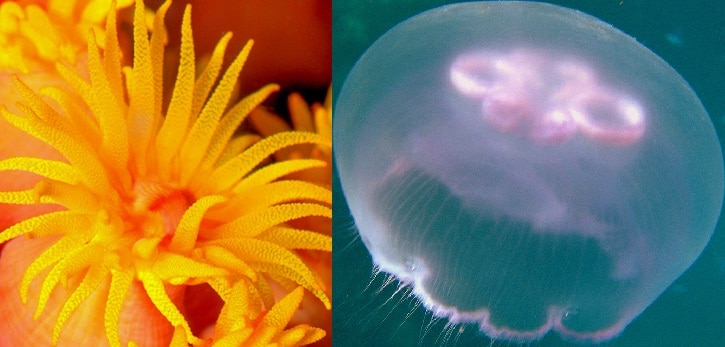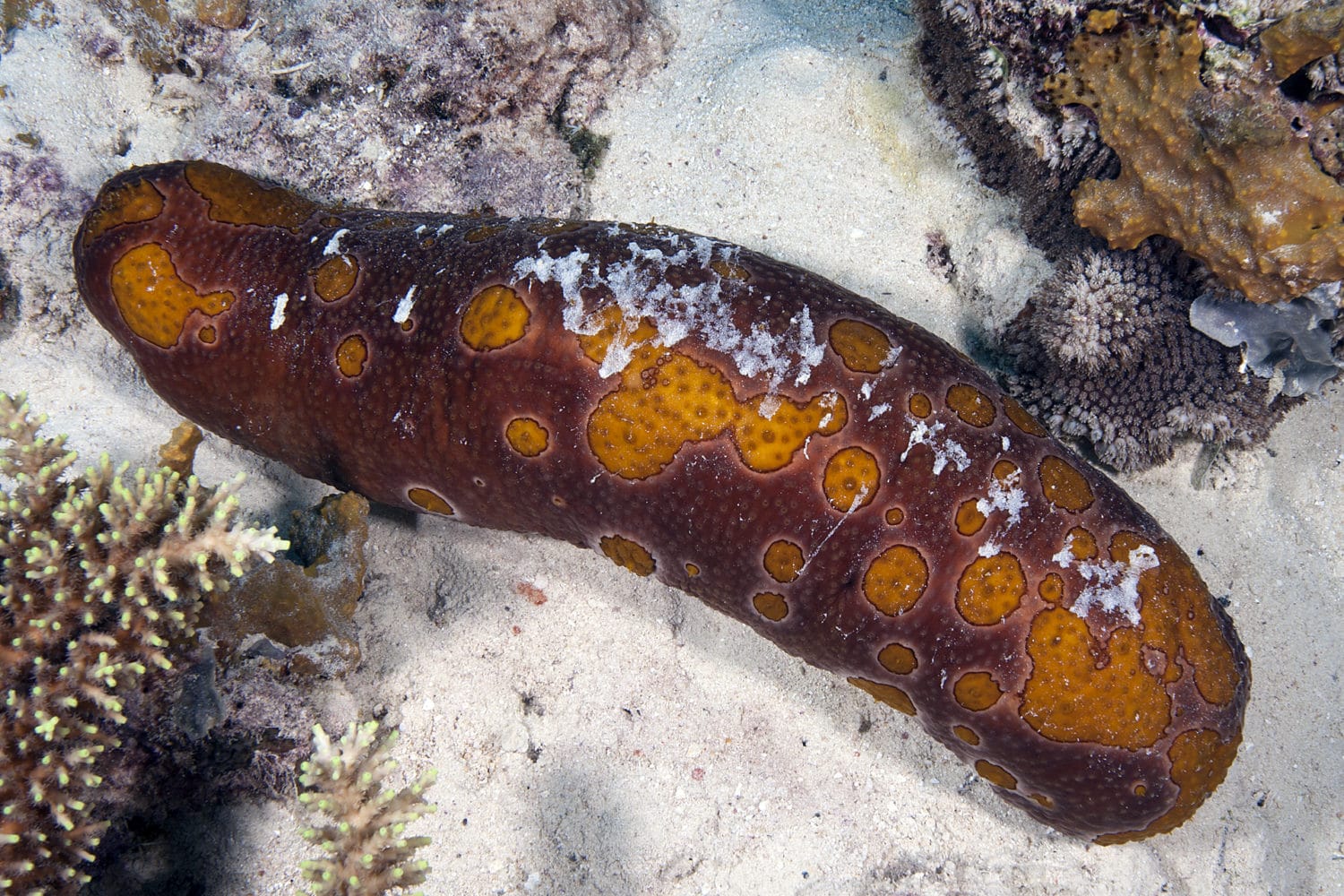Fact Friday

Some cnidarians switch between a polyp and a medusa body form. Corals and anemones only have the polyp stage. Jellyfish, as we think of them, are in the medusa stage, but they have a polyp stage when they are juveniles. Hydrozoans have the opposite: their adult form is a polyp, but they have a juvenile medusa stage.
Photo Credit: KSLOF, Rob Martimbeault

April 5, 2024
Leopard Sea Cucumber
Sea cucumbers are often referred to as “earthworms of the sea.” These strange-looking creatures are extremely beneficial to coral reefs. They use their tentacles to shovel sand, tiny organisms, and detritus into their mouths. Similar to earthworms, they provide “fertilizer” or food for other animals. They do so by excreting waste products such as calcium carbonate and ammonia, which provides nutrients for other animals like corals.
Photo Credit: Ken Marks




